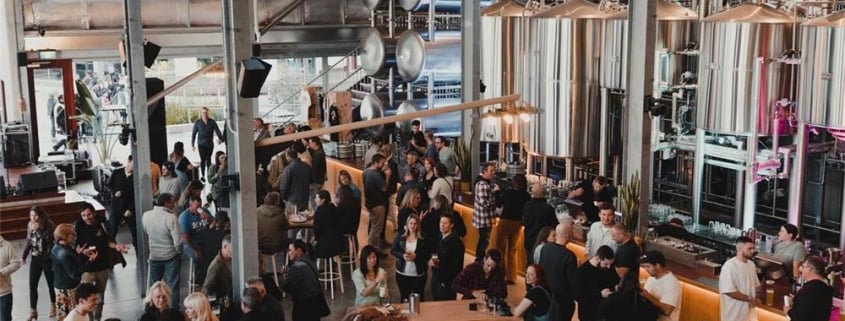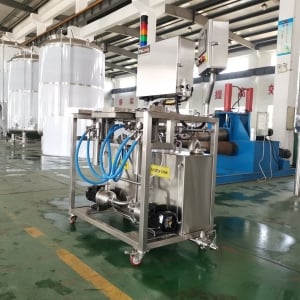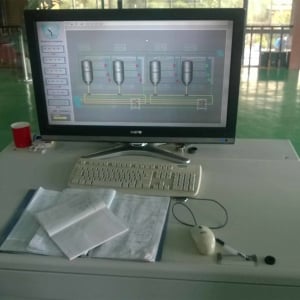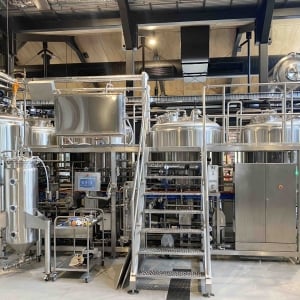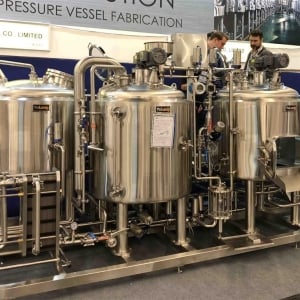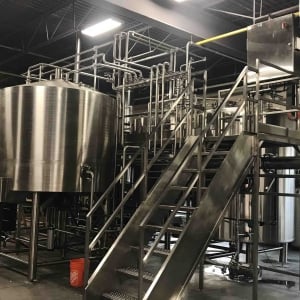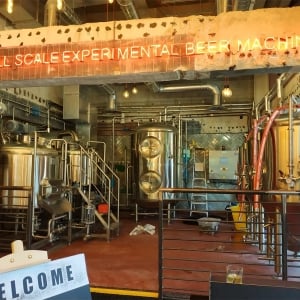6 BBL Fermenters for Craft Brewing
A 6 barrel (BBL) fermenter is a key piece of brewing equipment for many small to mid-size craft breweries producing up to 2,000 barrels per year. This guide provides a comprehensive overview of 6 BBL fermenters, including types, design considerations, suppliers, installation, operation, maintenance and how to select the right system.
Overview of 6 BBL Fermenters
A 6 BBL fermenter has a capacity of 6 barrels or 31 gallons per batch. With typical brewing cycles, a single 6 BBL unit can produce around 650 barrels annually. Most small breweries use between 1 to 4 x 6 BBL fermenters in their production layout.
Key details:
- Capacity: 6 BBL or 31 gallons per batch
- Annual beer output: 650 barrels with typical brewing cycles
- Vessel construction: Stainless steel (most common)
- Temperature control: Glycol/steam/electric cooling & heating
- Pressure rating: Atmospheric or Pressurized
- Popular suppliers: JV Northwest, Premier Stainless, SS Brewtech, Paco, Demoisy
6 BBL fermenters are available in different configurations to suit wort production systems, fermentation requirements, packaging layouts and brewhouse spaces.
Fermenter Types
| Fermenter | Description |
|---|---|
| Conical | Cone-shaped bottom with yeast dump valve and optional sight glass |
| Cylindroconical | Cylindrical bottom half with conical top section |
| Square/Rectangle | Boxy shape for compact fit, less efficient yeast harvest |
| Uni-tank (CCT) | Combines fermentation and beer storage in one vessel |
| Mobile | Mounted on casters for transfer between cellar areas |
| Single-walled | Basic stainless construction without insulation |
| Jacketed/Insulated | Glycol/steam/electric heating-cooling outer jacket |
| Atmospheric | Venting pressure relief valve |
| Pressurized | Rated for pressurization during fermentation |
Table 1: Main types of 6 BBL fermenters and their characteristics
Conical fermenters with yeast dump valves are the most popular as they allow efficient yeast harvesting after fermentation. Cylindroconical and square fermenters without cone bases take up less floor space but lose some yeast harvesting ability.
Insulated, jacketed units allow precise temperature control while mobile fermenters can be moved flexibly between locations. Pressurized fermenters allow brewers to ferment under pressure for desired beer profiles.
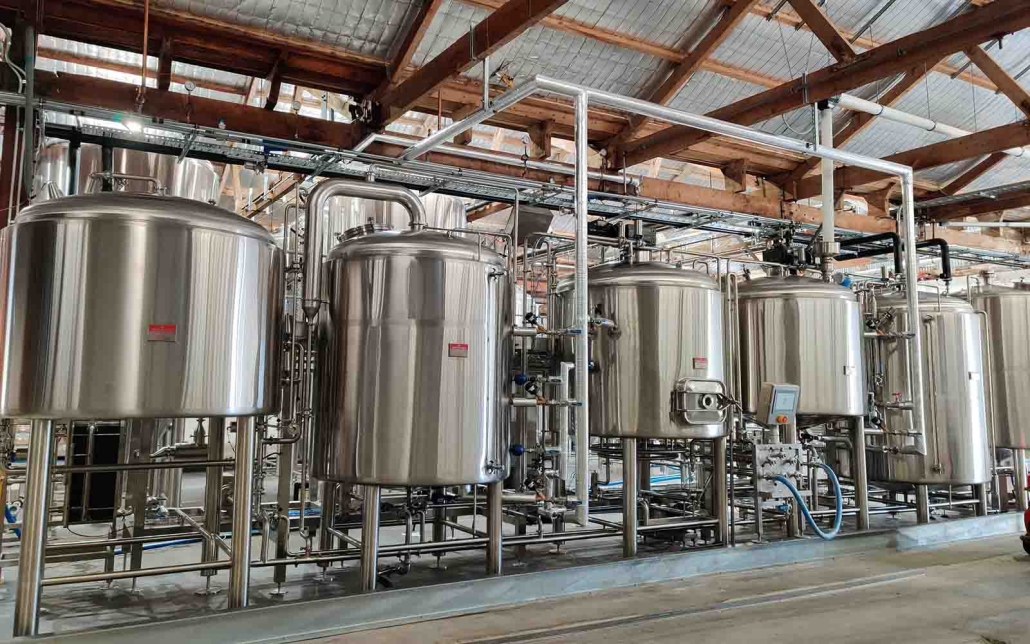
6 BBL Fermenter Dimensions
Typical dimensions for 6 BBL fermenter vessels are:
6 BBL Fermenter Size
| Type | Height (ft) | Diameter (ft) |
|---|---|---|
| Conical | 7 – 9 | 3 – 4 |
| Cylindroconical | 7 – 8 | 3 – 4 |
| Square | 6 – 8 | 3 – 4 |
Table 2: Approximate height and diameter dimensions for common 6 BBL fermenter types
The dimensions above can vary based on specific manufacturer designs and options like single-wall vs insulated. Shorter, wider units can fit tighter spaces while slimmer, taller tanks consume less floor space.
Installation Considerations
- Floor rating must support full weight with beer
- Height – measure doorway access, ceiling clearance
- Layout – allow transfer access and opening lids
- Utility connections – glycol, CO2, cleaning, electrical
Proper planning of fermenter placement, spacing and connections is crucial before purchasing and installing any units.
6 BBL Fermenter System Design
Beyond the fermentation tanks, a complete 6 BBL fermenter system consists of:
- Temperature control – glycol chiller, steam, electric
- Air/gas valves – blow-off, CO2 purge, oxygenation
- Sample valve – stainless tee port for taking gravity readings
- Sight glass – view batch activity and yeast level
- Cleaning accessories – spray balls, CIP attachments
- Automation package (optional) – monitors temp, density, controls valves
Additional components like stands, platforms, stairs and safety railings may be required as well.
Brewers can customize options like number of fermenters, temperature control methods, air/gas valves, automation systems and other accessories to match their production requirements, budgets and layouts.
Popular 6 BBL Fermenter Manufacturers & Costs
There are many equipment companies providing quality 6 BBL fermenters to suit different brewery needs and budgets. Below are some of the most popular stainless steel tank manufacturers in a range of price points:
| Manufacturer | Type | Price Range |
|---|---|---|
| JV Northwest | Conical/Cylindro | $16,000 – $26,000 |
| Premier Stainless | Conical/Square | $19,000 – $30,000 |
| SS Brewtech | Conical/Uni | $22,000 – $36,000 |
| Paco | Conical/Cylindro | $20,000 – $32,000 |
| Demoisy | Conical/Mobile | $18,000 – $28,000 |
Table 3: Popular 6 BBL fermenter suppliers and typical price ranges
The prices above are for base 6 BBL fermentation tanks only. Complete fermentation systems with additional valves, controls, accessories or automation can range from $25,000 up to $50,000+.
Factors like brand, quality, tank complexity, automation features and customization options can impact costs significantly. Comparing multiple vendors on total fermentation system pricing is recommended.
Selecting and Working With a 6 BBL Fermenter Supplier
Choosing the right fermenter supplier for your brewery involves careful consideration of several key factors:
| Factor | Evaluation Criteria |
|---|---|
| Reputation & Experience | Years in business, client references and reviews, breweries served |
| Quality & Lead Times | Consistent quality tanks, reliable order fulfillment |
| Offerings Match Needs | Tank types, automation features, customization capability |
| Service & Support | Responsiveness pre/post-sale, troubleshooting assistance |
| VALUE FOR Budget | Price, payment terms balanced with offerings |
Table 4: How to evaluate and select a 6 BBL fermenter supplier
Reaching out to 3-4 reputable suppliers, discussing needs in detail and requesting quotes for comparison is advisable. Prioritize finding the best value fermentation system for current brewery scale and future growth plans within budget.
Be ready to provide key brewery specifics like capacity goals, production schedule, space constraints, and budget. This allows suppliers to tailor proposals with optimal fermenter configuration, features and pricing.
Installing and Operating 6 BBL Fermenter Systems
Once purchased, 6 BBL fermenter systems require proper installation along with developing standard operating procedures for beer production.
Installation
Proper fermenter placement and connecting utilities are critical first steps.
| Task | Procedure |
|---|---|
| Positioning | Floor re-enforced for weight? Spacing for transfers & cleaning? |
| Glycol Hookup | Chiller connected to jackets, leak check completed |
| CO2 & Air Lines | Gas valves & stone connected, tested for leaks, purged |
| Sight Glass | Viewport cleaned & sealed, lighting positioned |
| Cleaning Setup | Spray balls inserted, CIP pump & tank connections confirmed |
| Safety Checks | Pressure relief valve working? Access stairs & railings? |
Table 5: 6 BBL Fermenter Installation Procedures
Poor installation can lead to leaks, injuries, damaged batches and downtime if issues emerge after starting up tanks. Thorough testing by a brewery or external technician is highly recommended.
Operation
Consistent procedures for fermenter filling, monitoring, yeast harvesting and cleaning are key to smooth operations.
| Task | Procedure |
|---|---|
| Wort Filling | O2 stone purge, bottom fill valve open, fill level sight glass |
| Fermentation | Temp and gravity monitoring, adjust per yeast strain |
| Yeast Dump | Open bottom valve, send to yeast brink or capture |
| Cleaning (CIP) | Caustic then acid combo with heat, spray ball flow |
| Sanitization | Final purges, sanitizer contact then water rinse |
Table 6: 6 BBL Fermenter Standard Operating Procedures
Following best practices around filling volumes, fermentation schedules, dumping yeast timely and cleaning/sanitizing thoroughly minimizes risk of infections or off-flavors.
Maintenance & Troubleshooting for 6 BBL Fermenters
Preventative maintenance and prompt issue resolution keeps fermentation on track.
| Area | Maintenance Tasks |
|---|---|
| Gaskets & Seals | Replace worn gaskets affecting seal, spray with glycerin |
| Valves | Lubricate/replace valves sticking or not sealing fully |
| Sight Glass & Lights | Clean viewing window, replace lights periodically |
| Glycol System | Check glycol concentration, clean/backflush chiller coils yearly |
| Pressure Relief | Test functionality quarterly, replace faulty valves |
Table 7: Recommended preventative maintenance on 6 BBL fermenters
| Issue | Potential Causes | Corrective Action |
|---|---|---|
| Not hitting target temps | Glycol concentration low, chiller coils dirty | Adjust glycol, clean coils |
| Not holding pressure | Damaged lid gasket, pressure relief sticking | Replace gasket, test/replace relief |
| Fermentation too fast/slow | Improper pitching rate,incorrect ferm temp profile | Adjust yeast quantity and ferm temp program per strain |
| Beer flavor issues | Bacterial infection, yeast health problems, fermenter residue | Deep clean & replace soft parts, replace yeast, improve SOPs |
Table 8: Troubleshooting common 6 BBL fermenter problems
Catching and addressing problems early prevents batches from being dumped or quality compromised.
6 BBL Fermenter FAQs
Q: What is the difference between conical and cylindroconical fermenters?
A: Conical fermenters have a fully cone-shaped bottom for efficient, compact yeast collection. Cylindroconical tanks feature a cylindrical lower half with a conical top section, taking up more floor space but allows some yeast harvesting ability.
Q: Should I choose insulated, jacketed fermenters or single-wall?
A: Insulated tanks allow precise temp control via glycol, steam or electric heating/cooling. This is recommended for most breweries. Single-wall non-insulated tanks depend solely on cellar ambient temp management.
Q: What level of automation should I consider?
A: Basic automation (temp and density monitoring, valve control) provides efficiency gains for an added $2,000 – $5,000 per tank. Advanced options (multi-parameter AI control) offer tighter precision but may carry a $5,000+ price premium. Evaluate ROI carefully.
Q: Is there a typical brewery growth path for fermenter sizing?
A: Many breweries scale up fermenters steadily in these general ranges: 1-3 BBL start with tasting room → 3-7 BBL with local distribution → 7-30 BBL with regional presence → 30-60+ BBL at mature production volume. Individual growth rates vary widely however.

